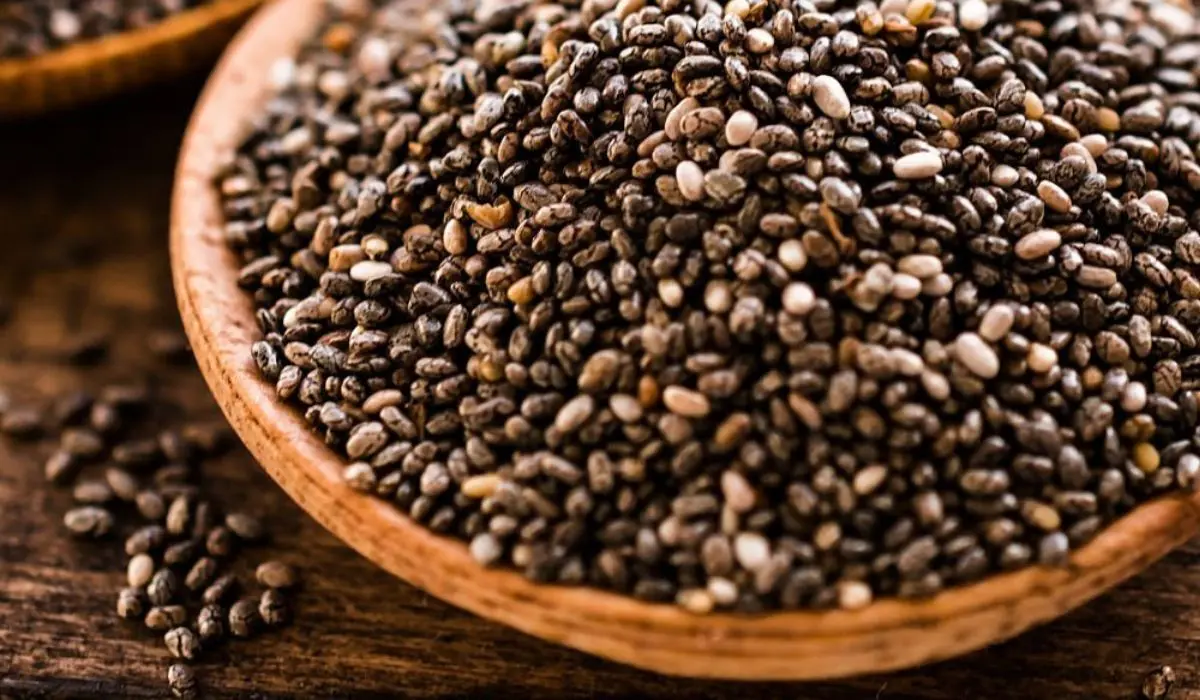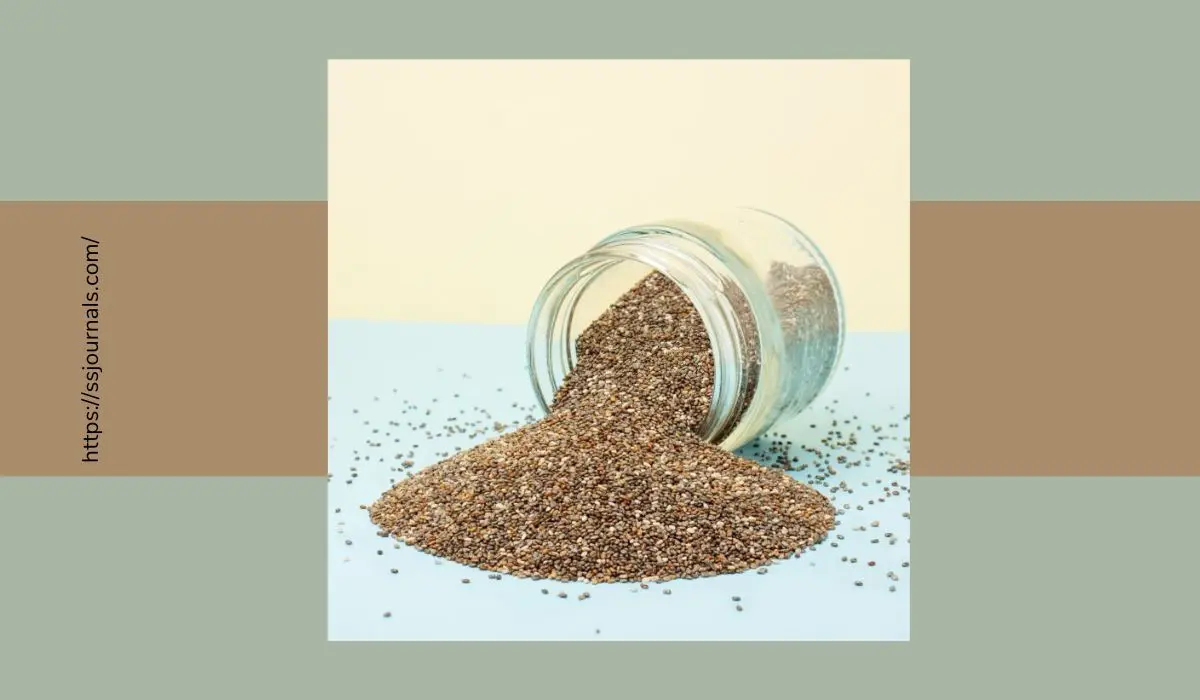Chia seeds have become a popular “superfood” among health-conscious adults. With their excellent nutritional profile, some parents also wonder if chia seeds could be a healthy addition to their child’s diet. But are chia seeds safe and appropriate for babies and young children? Let’s dig into the facts.
Why Are Chia Seeds Good For Babies And Children?
Chia seeds come from the Salvia hispanica plant native to parts of Mexico and Guatemala. Despite their tiny size, chia seeds are packed with nutrients.

Just 1-2 tablespoons provide minerals like manganese, magnesium, phosphorus, and calcium plus antioxidants, fiber, protein, and omega-3 fatty acids.
Thanks to their many health benefits, many adults add chia seeds to yogurt, oatmeal, and smoothies. But chia seeds also present some potential choking hazards and nutritional considerations for babies and children at different developmental stages.
Chia Seeds For Babies Under 12 Months
Chia seeds are generally not recommended for babies under 12 months old. Reasons include:
If pursuing baby-led weaning with finger foods after 6 months, chia is still too risky due to choking concerns. Consult your pediatrician before introducing chia seeds.
Introducing Chia Seeds From 1-3 Years Old
Between 1-3 years old, chia seeds can be carefully introduced if observing these precautions:
Offer chia seeds only as an occasional nutrition boost, not a daily item.
Follow the feeding therapist or pediatrician’s guidance for introducing appropriate finger foods during the transition to solid foods.
Are Chia Seeds Safe for Children Over 3 Years?
Around 3 years old, most children can try small whole chia seeds if care is taken:
– Limit portion to 1 teaspoon daily, gradually increasing to 1 tablespoon.
– Soak or soften chia seeds in liquid foods like yogurt, oatmeal, and smoothies. Do not serve dry.
– Monitor closely with first tastes to watch for reactions, which are still possible with new foods after age 3.
– Remind children to chew thoroughly and wash down with water.
– Avoid giving near bedtime due to rare reports of choking at night, likely due to insufficient chewing.
Reinforce safety around chewing and eating chia seeds slowly. Stop feeding immediately if you observe any gagging or difficulty swallowing.
Nutritional Benefits Of Chia Seeds For Kids
In appropriate amounts for a child’s age, chia seeds offer good nutrition:
– Protein for growth and muscle development
– Calcium, phosphorus, and magnesium for strong bones and teeth
– Iron to prevent deficiency and boost immunity
– Manganese to support brain development
– Fiber for healthy digestion and bowel movements
– Omega-3 fatty acids for brain function and concentration
– Antioxidants to counter inflammation and oxidative stress
However, benefits must be weighed carefully against potential risks for each child.
Potential Downsides Of Chia Seeds For Children
Despite nutritional upsides, chia seeds do present some possible concerns:
Choking and aspiration into lungs from whole seeds
Gastrointestinal obstruction if consumed dry and improperly chewed
Allergies manifesting as rashes, hives, diarrhea, or abdominal pain
Carbohydrate inhibition from excessive fiber interfering with nutrient absorption
Phytic acid content reduces mineral absorption like iron and zinc
Omega-3 fat oxidation after cooking produces trans fats
Counsel with both your pediatrician and pediatric feeding therapist before incorporating chia into your child’s diet.
Are Ground Chia Seeds Better For Kids?
Some parents opt to grind chia seeds before serving to reduce choking and allergy risks. However, this alters nutrition:
If grinding chia seeds, use a minimal processing technique like a spice grinder to preserve nutrition. But while seeds are optimal when kids are old enough to chew well.
Best Ways To Serve Chia To Children
When introducing chia seeds, combine them into recipes kids already enjoy:
🔸 Mix into yogurt or fruit purees
🔸 Bake into no-sugar-added muffins or breads
🔸 Blend into smoothies for an added nutrition boost
🔸 Create chia seed pudding using coconut or almond milk
🔸 Add to oatmeal or porridge
🔸 Fold into peanut or almond butter
🔸 Mix into applesauce or mash into ripe bananas
Signs Your Child Should Avoid Chia Seeds
Stop feeding chia seeds if your child exhibits:
➜ Coughing, gagging, or choking when eating chia seeds
➜ Vomiting or decreased appetite after ingesting
➜ Unexplained rash, hives, wheezing or diarrhea
➜ Severe abdominal pain
➜ Difficulty swallowing or painful swallowing
➜ Any difficulty breathing
Seek prompt medical care for evaluation of potential food allergies or eosinophilic disorders if your child cannot tolerate chia seeds.
FAQs
Start with 1/4-1/2 teaspoon daily in food. Slowly increase to 1 teaspoon, monitoring for tolerance. Do not exceed 1 tablespoon of chia seeds daily for a child aged 1-3 years old.
Yes, the fiber content may cause some mild constipation if exceeding recommendations. Offer plenty of hydrating fluids and fiber from other sources like fruits and veggies. Reduce serving size or frequency if constipation develops.
Soaking chia seeds before use softens them and allows them to pass through a child’s digestive system more easily. Soak for 10-15 minutes in milk or juice.
Chia seeds are generally not appropriate for babies under 12 months. However they may cause loose stools or diarrhea in older infants if exhibiting food intolerance or if overconsumed. Stop feeding if diarrhea develops.
Yes, it is ideal to refrigerate or freeze pre-portioned servings of chia seeds for children to preserve nutrition and freshness. Consume within 1-2 weeks. Check for any mold development before serving.
Conclusion
In summary, while chia seeds provide good nutrition for adults, they may pose risks to babies and young children like choking and allergies. Introduce chia seeds cautiously only after age 1, if at all. For older children able to chew thoroughly, chia seeds can be an occasional nutrient boost but require close parental monitoring for safe eating.
Check with your pediatrician before incorporating chia seeds to ensure appropriateness for your child’s individual health status and developmental stage.

